Insights into the Musa genome: syntenic relationships to rice and between Musa species
- PMID: 18234080
- PMCID: PMC2270835
- DOI: 10.1186/1471-2164-9-58
Insights into the Musa genome: syntenic relationships to rice and between Musa species
Abstract
Background: Musa species (Zingiberaceae, Zingiberales) including bananas and plantains are collectively the fourth most important crop in developing countries. Knowledge concerning Musa genome structure and the origin of distinct cultivars has greatly increased over the last few years. Until now, however, no large-scale analyses of Musa genomic sequence have been conducted. This study compares genomic sequence in two Musa species with orthologous regions in the rice genome.
Results: We produced 1.4 Mb of Musa sequence from 13 BAC clones, annotated and analyzed them along with 4 previously sequenced BACs. The 443 predicted genes revealed that Zingiberales genes share GC content and distribution characteristics with eudicot and Poaceae genomes. Comparison with rice revealed microsynteny regions that have persisted since the divergence of the Commelinid orders Poales and Zingiberales at least 117 Mya. The previously hypothesized large-scale duplication event in the common ancestor of major cereal lineages within the Poaceae was verified. The divergence time distributions for Musa-Zingiber (Zingiberaceae, Zingiberales) orthologs and paralogs provide strong evidence for a large-scale duplication event in the Musa lineage after its divergence from the Zingiberaceae approximately 61 Mya. Comparisons of genomic regions from M. acuminata and M. balbisiana revealed highly conserved genome structure, and indicated that these genomes diverged circa 4.6 Mya.
Conclusion: These results point to the utility of comparative analyses between distantly-related monocot species such as rice and Musa for improving our understanding of monocot genome evolution. Sequencing the genome of M. acuminata would provide a strong foundation for comparative genomics in the monocots. In addition a genome sequence would aid genomic and genetic analyses of cultivated Musa polyploid genotypes in research aimed at localizing and cloning genes controlling important agronomic traits for breeding purposes.
Figures
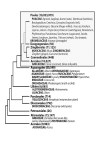

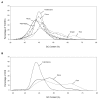
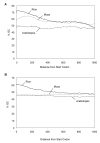
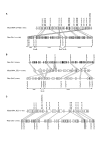
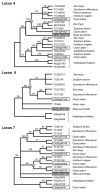


Similar articles
-
Integrated syntenic and phylogenomic analyses reveal an ancient genome duplication in monocots.Plant Cell. 2014 Jul;26(7):2792-802. doi: 10.1105/tpc.114.127597. Epub 2014 Jul 31. Plant Cell. 2014. PMID: 25082857 Free PMC article.
-
A BAC end view of the Musa acuminata genome.BMC Plant Biol. 2007 Jun 11;7:29. doi: 10.1186/1471-2229-7-29. BMC Plant Biol. 2007. PMID: 17562019 Free PMC article.
-
The banana (Musa acuminata) genome and the evolution of monocotyledonous plants.Nature. 2012 Aug 9;488(7410):213-7. doi: 10.1038/nature11241. Nature. 2012. PMID: 22801500
-
Exploring the genomes: from Arabidopsis to crops.J Plant Physiol. 2011 Jan 1;168(1):3-8. doi: 10.1016/j.jplph.2010.07.008. J Plant Physiol. 2011. PMID: 20817312 Review.
-
Codon usage and codon pair patterns in non-grass monocot genomes.Ann Bot. 2017 Nov 28;120(6):893-909. doi: 10.1093/aob/mcx112. Ann Bot. 2017. PMID: 29155926 Free PMC article. Review.
Cited by
-
Development of expressed sequence tag and expressed sequence tag-simple sequence repeat marker resources for Musa acuminata.AoB Plants. 2012;2012:pls030. doi: 10.1093/aobpla/pls030. Epub 2012 Nov 26. AoB Plants. 2012. PMID: 23240072 Free PMC article.
-
Gene Evolutionary Trajectories and GC Patterns Driven by Recombination in Zea mays.Front Plant Sci. 2016 Sep 22;7:1433. doi: 10.3389/fpls.2016.01433. eCollection 2016. Front Plant Sci. 2016. PMID: 27713757 Free PMC article.
-
Evolution of endogenous sequences of banana streak virus: what can we learn from banana (Musa sp.) evolution?J Virol. 2010 Jul;84(14):7346-59. doi: 10.1128/JVI.00401-10. Epub 2010 Apr 28. J Virol. 2010. PMID: 20427523 Free PMC article.
-
GC3 biology in corn, rice, sorghum and other grasses.BMC Genomics. 2010 May 16;11:308. doi: 10.1186/1471-2164-11-308. BMC Genomics. 2010. PMID: 20470436 Free PMC article.
-
Angiosperm genome comparisons reveal early polyploidy in the monocot lineage.Proc Natl Acad Sci U S A. 2010 Jan 5;107(1):472-7. doi: 10.1073/pnas.0908007107. Epub 2009 Dec 4. Proc Natl Acad Sci U S A. 2010. PMID: 19966307 Free PMC article.
References
-
- Arias P, Dankers C, Liu P, Pilkauskas P. The world banana economy 1985–2002. FAO. 2003. http://www.fao.org/documents/show_cdr.asp?url_file=/docrep/007/y5102e/y5...
-
- Janssen T, Bremer K. The age of major monocot groups inferred from 800 + rbcL sequences. Botanical Journal of the Linnean Society. 2004;146:385–398. doi: 10.1111/j.1095-8339.2004.00345.x. - DOI
-
- Sanderson MJ, Thorne JL, Wikström N, Bremer K. Molecular evidence on plant divergence times. American Journal of Botany. 2004;91 - PubMed
-
- Simmonds N, Shepherd K. The taxonomy and origins of the cultivated bananas. Bot J Linn Soc. 1955;55:302–312.
-
- Bartos J, Alkhimova O, Dolezelova M, De Langhe E, Dolezel J. Nuclear genome size and genomic distribution of ribosomal DNA in Musa and Ensete (Musaceae): taxonomic implications. Cytogenet Genome Res. 2005;109:50–57. - PubMed
Publication types
MeSH terms
Substances
LinkOut - more resources
Full Text Sources
Miscellaneous

